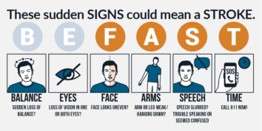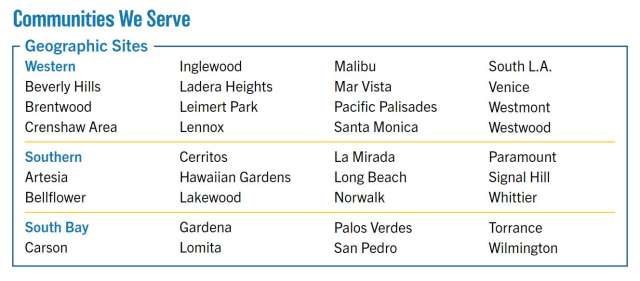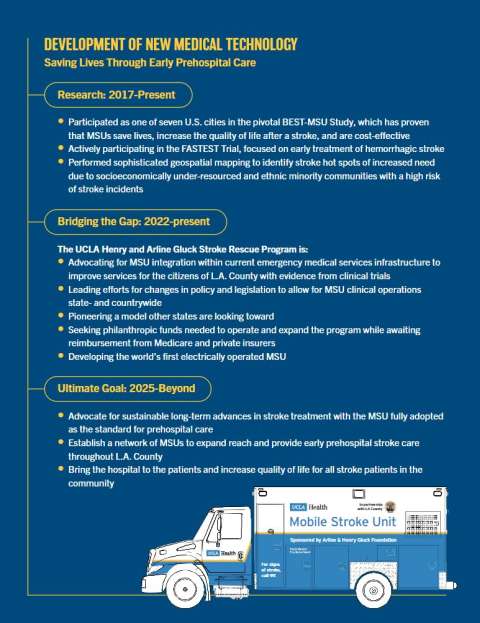Frequently Asked Questions
What are the signs and symptoms of a stroke?
The best way to learn symptoms of a stroke is to remember BEFAST. If you see sudden:
- Balance issues
- Eyes or vision loss
- Facial drooping
- Arm weakness or numbness, or
- Speech difficulties, then it’s
- Time to call 911.

How will patients get access to the Mobile Stroke Unit?
The MSU will respond as a part of the 911 Emergency Response System. When a patient within the MSU’s response area calls 911 about a stroke (or stroke-like symptoms), the MSU will be immediately dispatched to the scene.
What area does the mobile stroke unit operate in?
The MSU now collaborates with six fire department partners across three geographic sites (Western, Southern, and South Bay), providing clinical coverage for acute stroke dispatches 12 hours per day, six days per week. This expansion has enabled the MSU to reach and serve more people in need, saving precious minutes and potentially lives in the process.

Why does the MSU need philanthropy funds?
Private philanthropy is essential to the UCLA Arline and Henry Gluck Stroke Rescue Program and its lifesaving mission. During the demonstration and bridging stages, the program was sustained by the visionary philanthropy of Arline and Henry Gluck and other generous individuals. The award-winning Stroke Rescue Program has achieved so much since its inception.
Entering Phase 3, the program seeks support to:
1. Continue advocacy to reform legislation on a national scale for the care received within an MSU to
be reimbursed by insurance.
2. Purchase and equip additional MSUs.
3. Expand clinical services to provide care to all of L.A. County, including communities where
reimbursements from sources such as Medicare and Medi-Cal will not cover program costs.
Broadening service areas will help save more lives and enhance quality of life for stroke survivors.
How does legislation and advocacy help the mobile stroke unit achieve its goals?
Having both clinical and cost-effectiveness data to support widespread implementation of MSUs for stroke care, UCLA joined its efforts with state and county officials to advocate for the passing of Assembly Bill 2117, which sought to designate MSUs as a clinical place of service. Governor Gavin Newsom signed this innovative bill on September 29, 2022. Having the support of the California State Assembly, State Senate, and governor for this bill further highlights the important role of MSUs in California emergency systems of care.
What are the benefits of mobile stroke units?
BEST-MSU Study: The UCLA Health MSU participated as one of seven U.S. cities in the pivotal study, Benefits of Stroke Treatment Delivered Using a Mobile Stroke Unit Compared to Standard Management by Emergency Medical Services (BEST-MSU). This study showed MSUs improved access to stroke care and treatment, as well as better clinical outcomes for patients treated in MSUs, compared to those who were treated later in the emergency department.
By delivering proven stroke therapies to patients faster than ever before, we anticipate this will improve immediate patient outcomes and reduce patient long-term disability, allowing patients to lead fuller, healthier lives.
For more information about the UCLA Stroke Center visit stroke.ucla.edu.
Why are MSUs not yet a standard of care?
